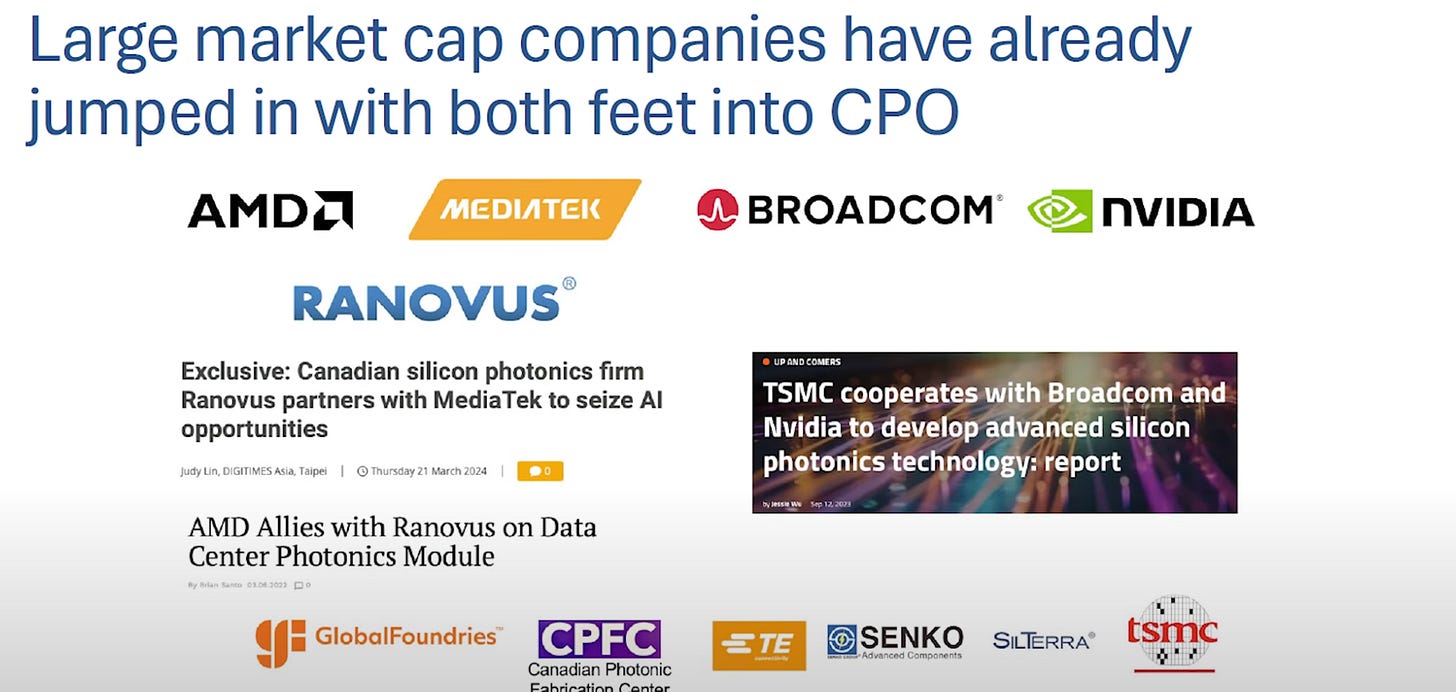As AI workloads skyrocket, the importance of GPU utilization in hyper-connected AI data centers has taken center stage. Traditional copper interconnects are reaching their limits both in bandwidth, power efficiency and thermal properties. These limitations restrict high-performance and high power computing environments, where every bit of bandwidth, every millisecond of latency, and every watt of power matters.
Co-Packaged Optics (CPO) is an advanced technology in data center architecture where optical transceivers are integrated directly into the same package as the switching ASICs or processing chips. Unlike traditional designs where optical modules connect to chips via longer electrical traces on a circuit board, CPO minimizes the electrical interconnect distance by co-locating the optical and electronic components. This close integration reduces power consumption and signal loss, enhances bandwidth, and lowers latency by eliminating the inefficiencies associated with electrical connections at high data rates. By bringing the optical interfaces right next to the silicon chips, CPO enables more efficient, high-speed data transmission within data centers, addressing the escalating demands of AI workloads and high-performance computing environments.
Increasing number of clients are eyeing the latest developments in Co-Packaged Optics (CPO). They see major players announcing substantial investments in CPO as a clear indicator of its potential.
In this article, we will go through:
Motivation Behind CPO: Meta’s Llama Model’s Failure Pareto
Chiplet Technology & What Is a Co-Packaged Optics?
Solder Down CPO vs. Mountable CPO and Why?
Co-Packaged Optics Value Chain & Companies
Which Players Are Resisting CPO?
Challenges: Cost Reduction Projection to 2028 and KPIs
Please note: The insights presented in this article are derived from confidential consultations our team has conducted with clients across private equity, hedge funds, startups, and investment banks, facilitated through specialized expert networks. Due to our agreements with these networks, we cannot reveal specific names from these discussions. Therefore, we offer a summarized version of these insights, ensuring valuable content while upholding our confidentiality commitments.
Motivation Behind: Meta’s Llama Model’s Failure Pareto
At the recent 2024 OCP Global Summit, the Photonics and Co-Packaged Optics (CPO) track was a major focus. Leaders from Meta released performance insights for its latest LLaMA 3.1 model, a 405-billion-parameter LLM trained on a massive infrastructure of 16,000 GPUs over a 54-day pre-training period.



